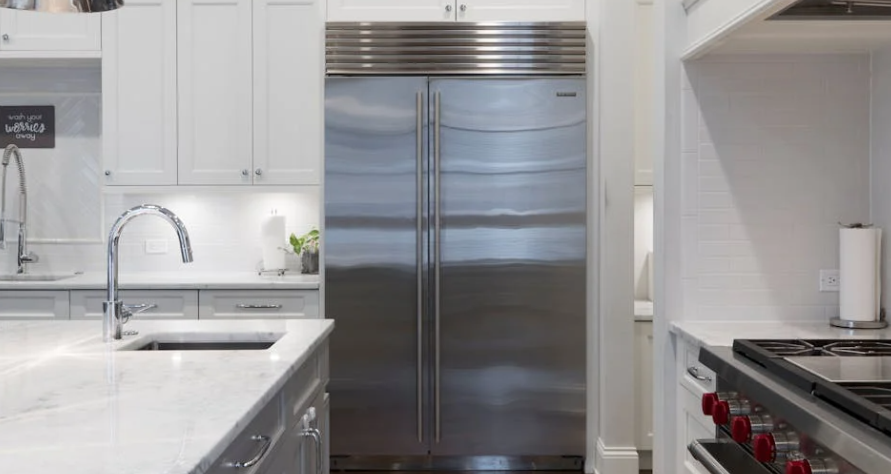
Creating a comprehensive restaurant business plan is a critical step in turning your culinary dream into a successful reality. Whether you’re opening a trendy café, a high-end restaurant, or a fast-food joint, a well-thought-out business plan will guide you through the process and attract potential investors. This article will outline the key components of a restaurant business plan in 2024, with a special focus on the essential restaurant equipment you’ll need.
Executive Summary
The executive summary is the first section of your business plan but should be written last. It provides a concise overview of your entire plan, highlighting the key points and selling your concept to readers. Include your restaurant’s name, location, mission statement, and a brief description of the concept. Mention the type of cuisine, target market, and a snapshot of financial projections.
Example:
“Our mission at [Restaurant Name] is to deliver an unforgettable dining experience by combining innovative cuisine, exceptional service, and a welcoming atmosphere. Located in the heart of [City], our modern bistro will offer a diverse menu inspired by global flavors, targeting food enthusiasts and casual diners alike.”
Business Description
Provide a detailed description of your restaurant, including its concept, theme, and unique selling points. Explain the type of restaurant (e.g., fine dining, casual, fast food), the style of service, and the overall atmosphere. Highlight what sets your restaurant apart from competitors.
Example:
“[Restaurant Name] will be a mid-range bistro offering a fusion of international cuisines with a focus on locally sourced ingredients. Our unique selling point is our interactive dining experience, where guests can watch chefs prepare their meals in an open kitchen.”
Market Analysis
Conduct thorough research on your target market and industry trends. Identify your primary and secondary customer demographics, their dining preferences, and spending habits. Analyze your competitors, their strengths and weaknesses, and how your restaurant will differentiate itself.
Example:
“Our target market includes young professionals and families in the [City] area who are seeking unique dining experiences. According to recent industry reports, there is a growing demand for sustainable and locally sourced food, which aligns with our menu offerings.”
Marketing and Sales Strategy
Outline your marketing and sales strategies to attract and retain customers. Include details on branding, online presence, advertising, promotions, and loyalty programs. Discuss how you’ll leverage social media, partnerships, and events to build a loyal customer base.
Example:
“We will utilize a multi-channel marketing strategy, including social media campaigns, influencer partnerships, and targeted online ads. Our loyalty program will offer exclusive discounts and early access to special events, encouraging repeat visits.”
Restaurant Equipment
A crucial part of your business plan is detailing the restaurant equipment you’ll need. This section should include a list of essential equipment, suppliers, and associated costs. The right restaurant equipment is vital for efficient operations and high-quality food preparation.
Kitchen Equipment
-
Ovens: Convection ovens for baking and roasting, combi ovens for versatile cooking.
-
Ranges and Cooktops: Gas ranges for precise temperature control, electric ranges for consistency.
-
Grills: Charbroilers and flat-top grills for a variety of cooking techniques.
-
Fryers: Deep fryers for crispy fried foods, countertop fryers for smaller kitchens.
-
Microwaves: Commercial microwaves for quick reheating and defrosting.
Refrigeration and Storage
-
Refrigerators and Freezers: Walk-in coolers for bulk storage, reach-in refrigerators for easy access.
-
Prep Tables with Refrigeration: Sandwich/salad prep tables to keep ingredients fresh and organized.
-
Ice Machines: Essential for beverages and food preparation.
Food Preparation Equipment
-
Mixers: Stand mixers for dough and batter, hand mixers for smaller tasks.
-
Food Processors: For chopping, slicing, dicing, and pureeing.
-
Blenders: Commercial blenders for soups, sauces, and smoothies.
-
Slicers: For precise cutting of meats, cheeses, and vegetables.
Dishwashing and Cleaning
-
Dishwashers: High-capacity commercial dishwashers for efficiency.
-
Sinks: Three-compartment sinks for washing, rinsing, and sanitizing dishes.
-
Cleaning Supplies: Mops, brooms, and sanitizing solutions.
Example:
“Our kitchen will be equipped with top-of-the-line commercial appliances to ensure efficiency and quality. We have identified reputable suppliers for our restaurant equipment, and the total estimated cost is $[Amount].”
Organizational Structure
Describe your restaurant’s organizational structure, including the management team and key staff positions. Outline the roles and responsibilities of each team member and their relevant experience.
Example:
“Our management team consists of experienced professionals, including our head chef, who brings over 15 years of culinary expertise, and our general manager, who has successfully managed several high-profile restaurants.”
Menu and Pricing
Present your proposed menu, highlighting the variety of dishes and price points. Explain how your menu aligns with your restaurant concept and target market. Include a sample menu to give readers an idea of what to expect.
Example:
“Our menu features a range of appetizers, entrees, and desserts, with prices ranging from $10 to $30. We will also offer seasonal specials and a tasting menu to showcase our chef’s creativity.”
Financial Projections
Provide detailed financial projections, including startup costs, revenue forecasts, and profit margins. Include a break-even analysis, cash flow statement, and projected balance sheet. Clearly outline your funding requirements and potential return on investment.
Example:
“We project monthly revenues of $[Amount], with a break-even point at [Number] months. Our startup costs, including restaurant equipment, leasehold improvements, and initial inventory, total $[Amount].”
Conclusion
Summarize the key points of your business plan, reiterating your restaurant’s potential for success. Emphasize your commitment to providing an exceptional dining experience and your confidence in achieving your financial goals.




